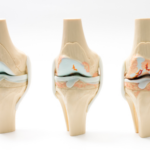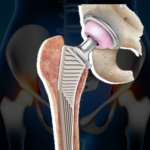
Introduction-
In recent years, robotic technology has revolutionized the field of orthopedic surgery, particularly in knee replacements. Among the various advancements, minimally invasive robotic knee replacement has gained significant attention. In this blog post, we will take a closer look at the procedure of minimally invasive robotic knee replacement, exploring its benefits, key steps and patient outcomes. From preoperative planning to postoperative care, we will provide a comprehensive overview of this innovative approach to knee replacement surgery, highlighting the advantages it offers over traditional methods. So, let’s dive in and discover how robotic treatment is reshaping knee replacement surgery.
Understanding Minimally Invasive Robotic Knee Replacement-
Minimally invasive robotic knee replacement is a cutting-edge surgical technique that combines robotic technology and a less invasive approach to treat knee joint damage. It involves the use of advanced robotic systems to assist surgeons in precise implant positioning and bone preparation through smaller incisions. This approach offers numerous advantages, such as reduced postoperative pain, faster recovery, improved functionality and enhanced patient satisfaction. By integrating robotics into knee replacement surgery, patients can experience better outcomes and a quicker return to an active lifestyle.
Role of Robotic Technology in Knee Replacement Surgery-
Robotic technology plays a crucial role in knee replacement surgery by enhancing surgical precision and improving patient outcomes. It allows for precise preoperative planning, personalized treatment plans and accurate implant positioning. Robotic assistance provides surgeons with real-time feedback and precise control, leading to better alignment and functionality of the knee joint. By leveraging robotic technology, knee replacement surgeries can achieve optimal results and improve the overall quality of life for patients.
Planning for Minimally Invasive Robotic Knee Replacement-
Utilizing 3D imaging and virtual simulation is a key component of minimally invasive robotic knee replacement surgery. It involves creating a detailed three-dimensional model of the patient’s knee joint, allowing surgeons to visualize the joint’s anatomy and plan the procedure accurately. Virtual simulation enables surgeons to simulate the surgery beforehand, optimizing implant placement and ensuring precise bone preparation. This technology provides a comprehensive understanding of the patient’s unique knee structure, enhancing surgical planning and contributing to improved outcomes.
The Procedure of Minimally Invasive Robotic Knee Replacement-
- Anaesthesia and Incision Placement
During minimally invasive robotic knee replacement, patients are administered anaesthesia to ensure a pain-free surgical experience. Precise incision placement is carefully determined to access the knee joint while minimizing tissue damage, resulting in smaller incisions and reduced scarring.
- Robot-Assisted Bone Preparation
With the assistance of robotic technology, the bone preparation process is performed with remarkable precision. The robotic system aids in accurately shaping and removing damaged bone tissue, ensuring optimal fit and alignment for the knee implant, leading to improved joint functionality.
- Accurate Implant Placement with Robotic Guidance
Robotic guidance plays a vital role in achieving precise implant placement. The robotic system provides real-time feedback and assists surgeons in positioning the implant with utmost accuracy, promoting optimal joint function and stability.
- Closing the Incisions and Postoperative Care
After completing the surgical procedure, the incisions are meticulously closed using sutures or staples. Postoperative care involves monitoring the patient’s recovery, administering pain management, providing physical therapy and guiding the patient through a rehabilitation program to promote healing and regain mobility.
In the realm of orthopedic surgery, minimally invasive robotic knee replacement has emerged as a ground-breaking technique. By incorporating robotic technology into knee replacement procedures, surgeons can achieve enhanced precision and patient outcomes. This blog post provided a closer look at the procedure, highlighting its benefits and key steps. It explored the role of robotic technology in knee replacement surgery, emphasizing the advantages it offers over traditional methods. Utilizing 3D imaging and virtual simulation allows for personalized treatment planning, while robotic guidance ensures accurate implant placement. The post also discussed the importance of postoperative care and rehabilitation. For expert robotic knee replacement surgery, you can visit Dr Saurabh Giri at https://www.kneereplacementsurgeonpune.com/ to experience improved joint functionality and a better quality of life.




